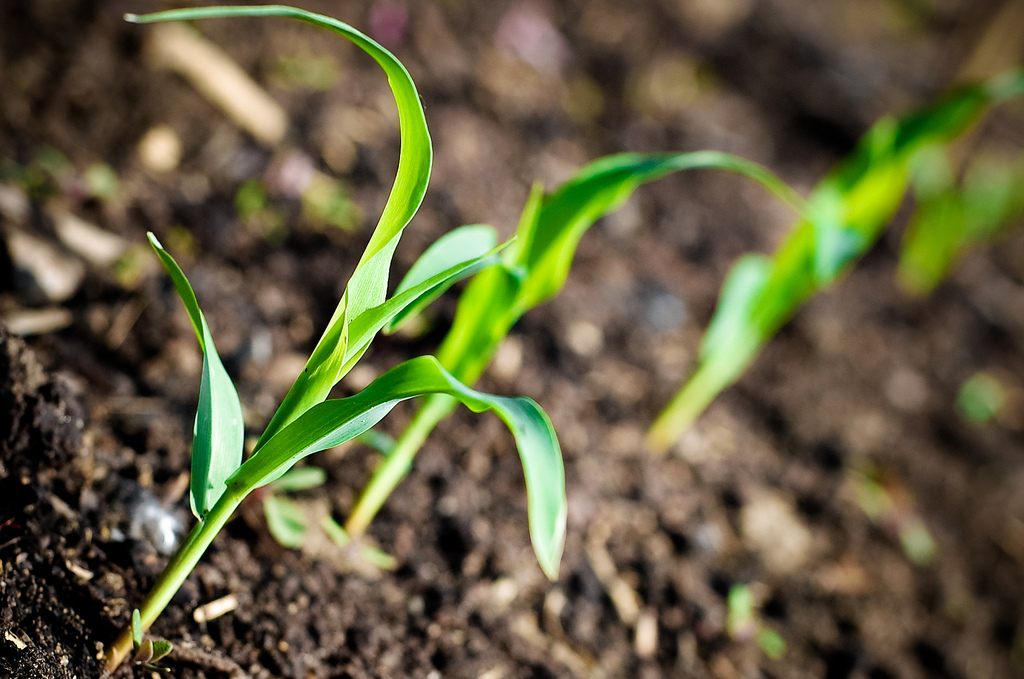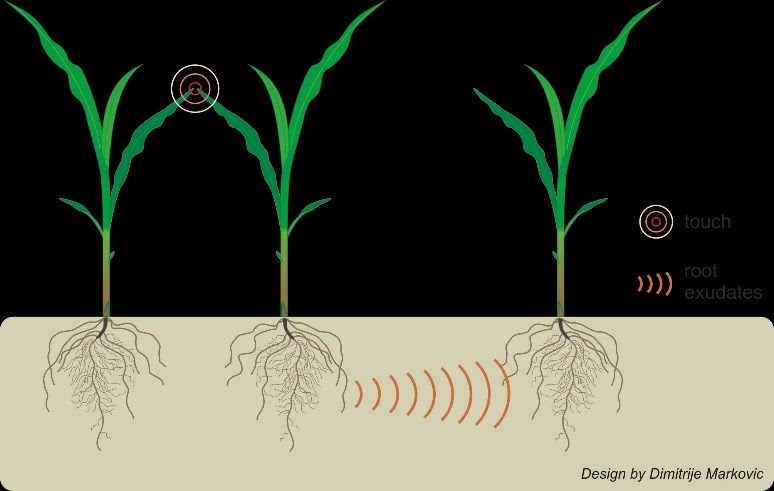Plants Are Communicating With Each Other Using Underground Signals
A new report shows that touching one plant can affect the behavior of its neighbors.

Plants are more sensitive than they might seem. Although they stay in one spot, they are monitoring and reacting to the world around them; in some cases, they even remember the stresses and stimuli of the past. They’re also aware of the community of plants around them, and in a new paper, published in PLOS ONE, a team of scientists shows how plants monitor underground signals and react to the stresses their neighbors experience, too. How do plants react, they wondered, when they know a nearby plant has been touched?
On a very basic level, plants split their energies between growing above ground, to harvest the resources of the sun, and below ground, to harvest the resources of the earth. But they can change how those resources are allocated depending on the situation in which they find themselves. Previous research has shown that when a plant’s leaves come into contact with another plant, it will allocate more resources to growing above ground than below. All plants put down roots, but how deeply? Their behavior can change, if their neighborhood is crowded.
In the PLOS ONE paper, the team was interested in how this sort of behavior in one plant might affect the behavior of others. “Because the plants are allocating more resources above ground, it should change the development of root systems and that probably will also change the emission of root exudates [chemical signals sent out by the roots] and the quality of root exudates,” says the lead author Velemir Ninkovic, a senior lecturer at the Swedish University of Agricultural Sciences. In their experiments, Ninkovic and his colleagues looked how those underground signals changed the way neighboring plants grow.
To start, they stimulated certain plants, gently touching the leaves “from the base to the top… with a soft squirrel hair face brush.” They then left those touched plants to grow in a hydroponic solution, which would also capture any chemical signals from the plants’ roots.

Using that growth solution, the scientists tested the reactions of other plants to any signals the touched plants’ roots had released. In one test, they set up untouched plants in a Y-shaped tube, with the growth solution from the touched plants in one branch and a new growth solution in the other, giving the plants a choice between two different environments for their roots. In another experiment, they tested plants’ reactions to those signals by immersing their roots in the solution from a previously touched plant. In a third experiment, they observed how plants reacted when grown next to a plant that was touched.
In all three experiments, the plants changed their growth strategy in response to the root signals from touched plants. When given the option of choosing, plants preferred the new solution over the solution belonging to touched plants. (Sometimes they even switched course, away from the touched solution.) When reacting to the sudden contact with the touched solution, they put more resources into growing their leaves and stems, instead of their roots. When they were grown alongside touched plants, they grew bigger altogether, increasing their overall biomass production.
It’s clear that a stress on one plant—that light touch—can impact the behavior of plants around it. In the paper, the scientists write that more work needs to be done to understand the ecological implications of these findings. You could think of it sort of like gossip: One plant warns the others that it’s been touched and that there’s competition over in its direction. But Ninkovic says he tends to think the right analogy is listening. “Probably the plants would not like to release any cues that neighboring plants can detect,” he says. It might be better not broadcast information to potential competitors. But there’s an advantage to gathering information about neighbors, so the plants absorb any signals that come their way.
When Ninkovic first started working in this field, he says, he was skeptical of the idea of plant-plant communication. But over the past several years, a growing body of evidence has shown that plants are paying much more attention, in their particular plant way, to the world around them than we ever realized. Ninkovic is interested now in understanding the complex set of signals that plants are exposed to and how plants parse them: Which signals are the most important and when? How do plants take all the information available to them and change their behavior accordingly? The world, even to a plant, can be a complicated place to navigate.





















Follow us on Twitter to get the latest on the world's hidden wonders.
Like us on Facebook to get the latest on the world's hidden wonders.
Follow us on Twitter Like us on Facebook